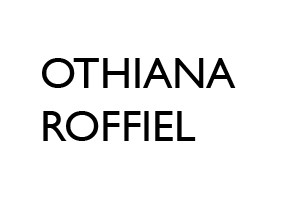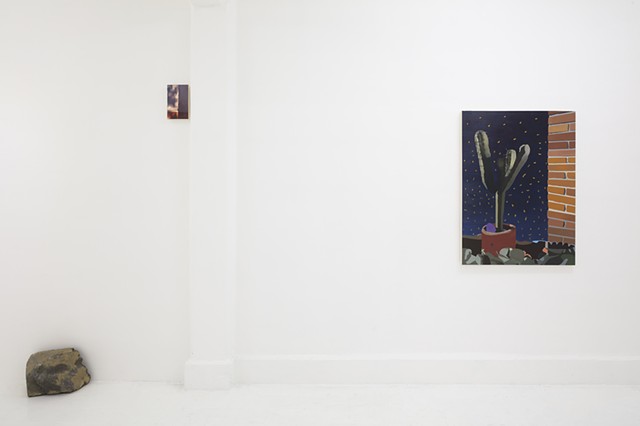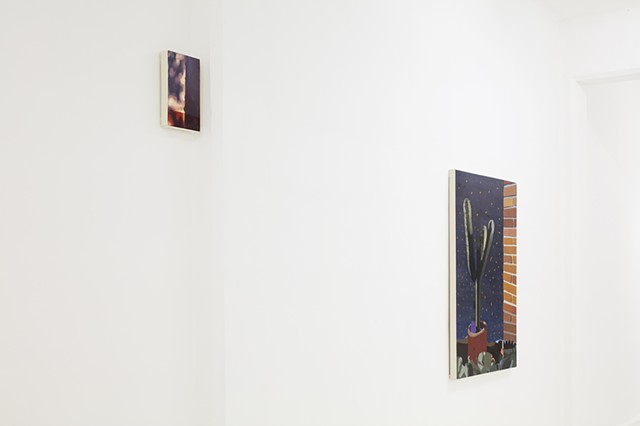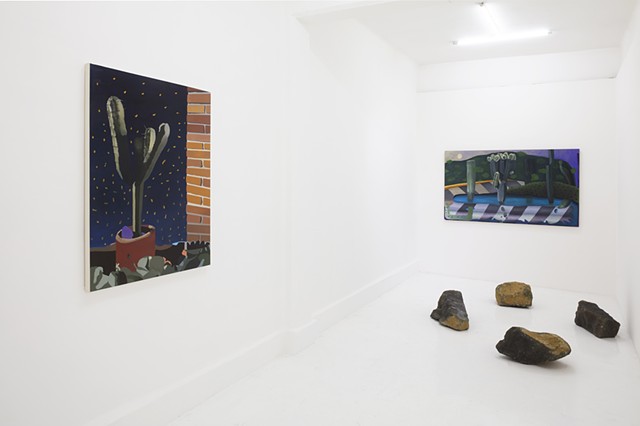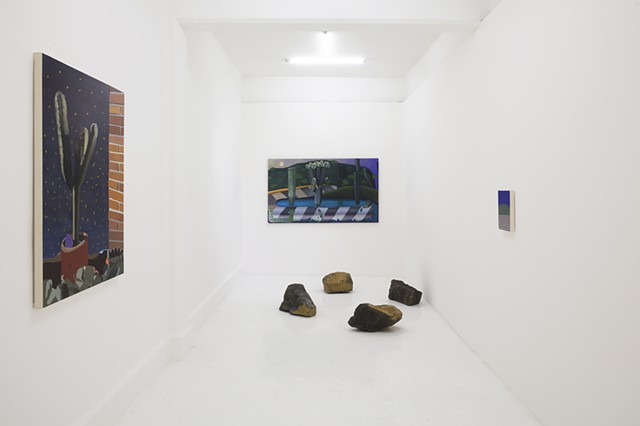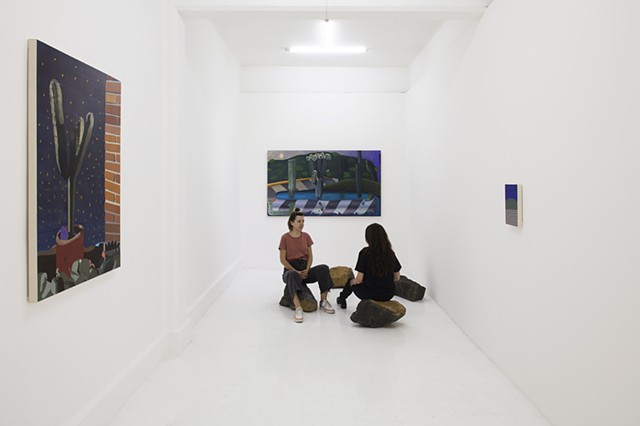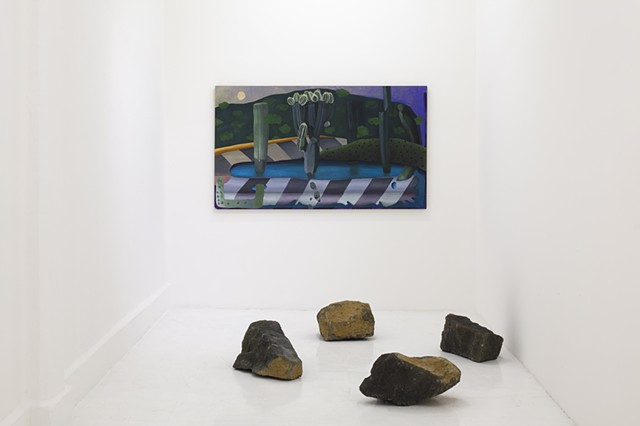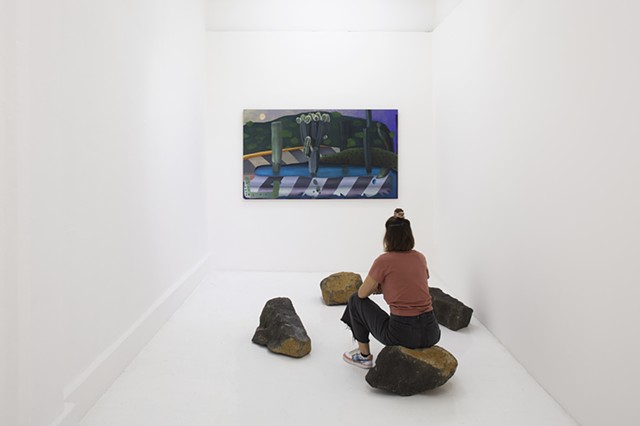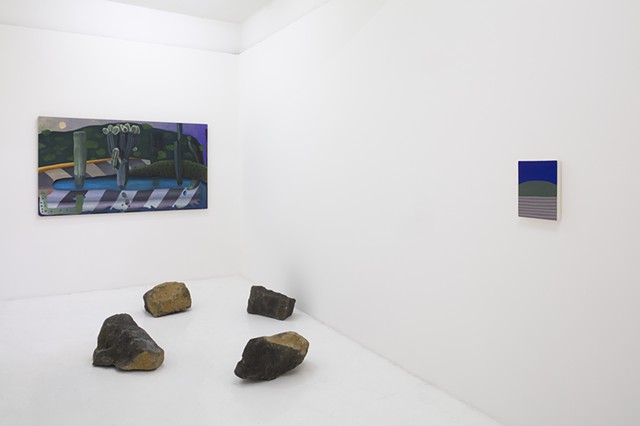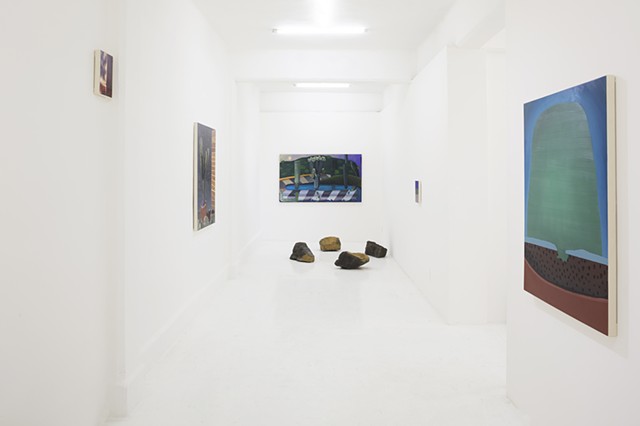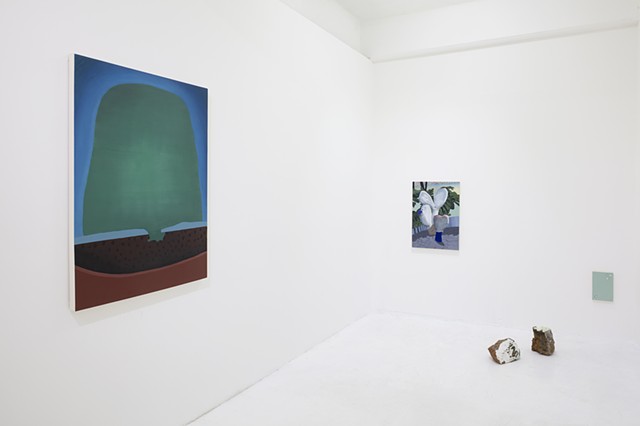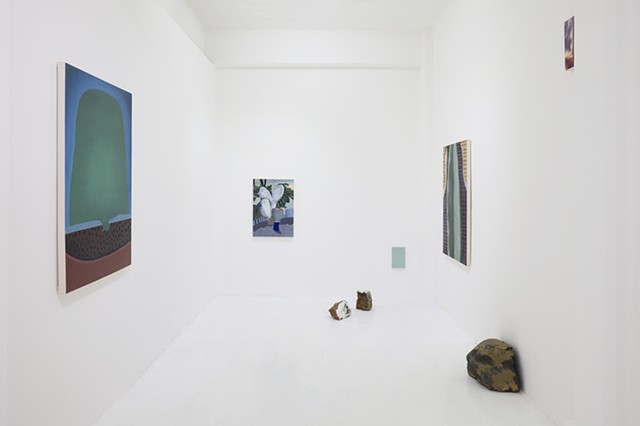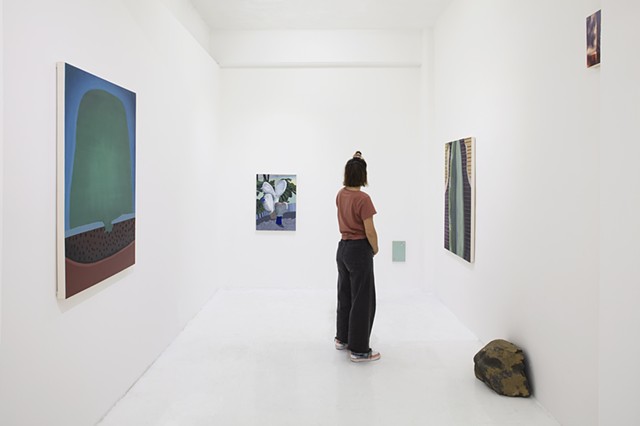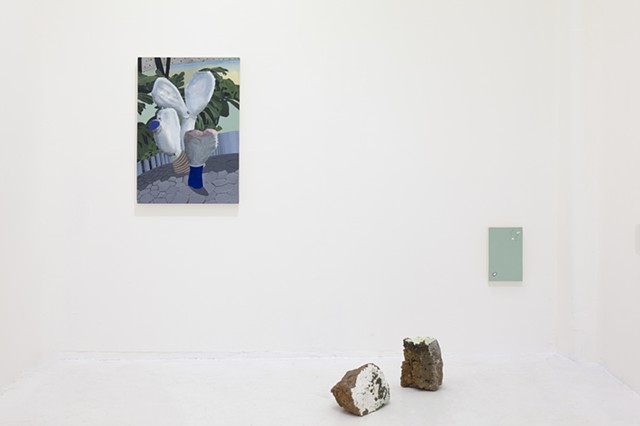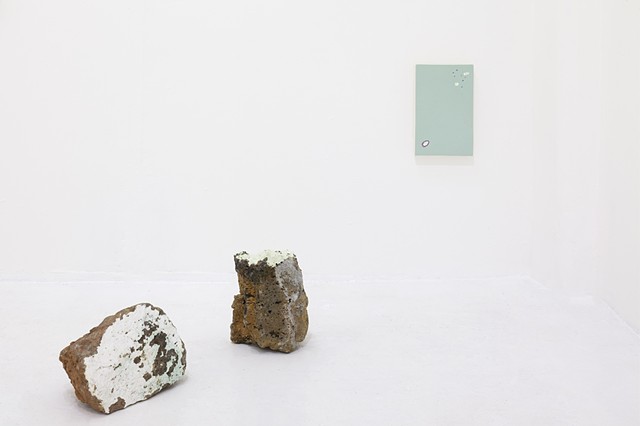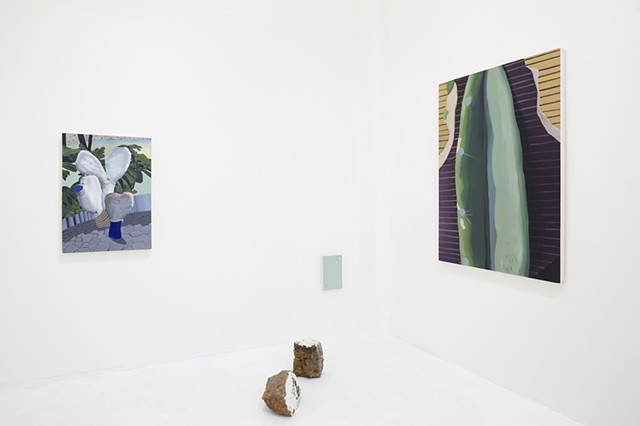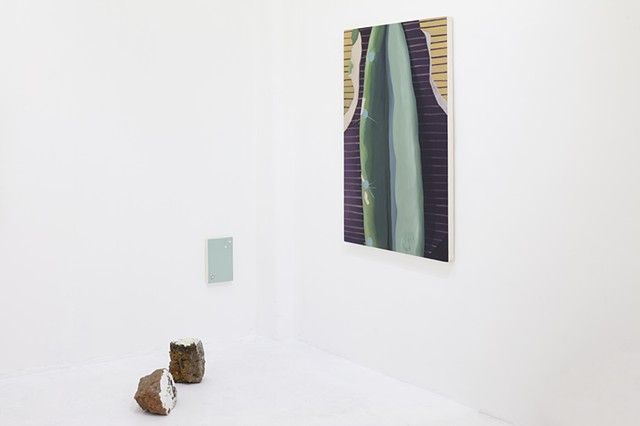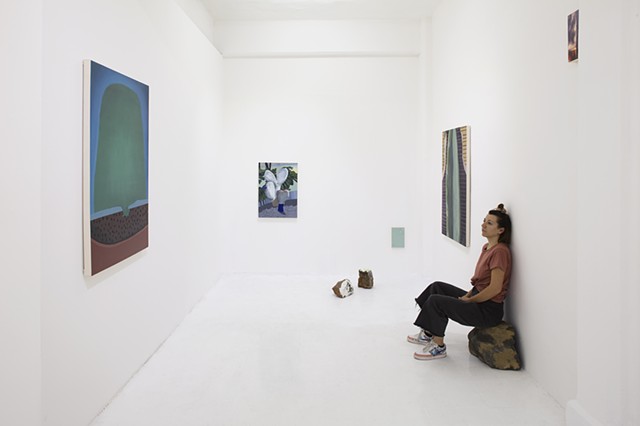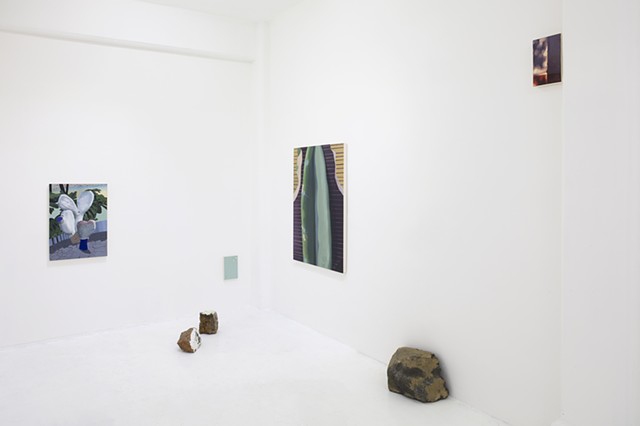"It Takes a Lot of Stuff for a Flower to Grow" Galería Karen Huber, Mexico City, 2021
It Takes a Lot of Stuff for a Flower to Grow
Curated by Laura Orozco
Galería Karen Huber, Mexico City
July 9 – August 28, 2021
Photography: Sergio López
I will attempt to answer the question: “What use are flowers?” by means of the pictorial thought that configures the practice of Othiana Roffiel, who manages to find sense in unexpected places through the formal possibilities that painting grants. In relation to this show, the phrase has different origins: It is the title of an unfinished work by Lorraine Hansberry, written in 1962, which was then quoted in 2020 by Amy Sillman in the text for her exhibition Twice Removed, and that year it was also invoked by the artist in the production process for this series. Considering human’s need for flowers—being givers of life—, the statement compels the reader to seek for alternative meanings; between the lines, it tells us that what we just read requires another kind of gaze. This open question, which has been passed from hand to hand, transcends time and geography, unfolding an invitation to converse and join voices—a motive that can also be perceived in Othiana’s pursuit to create via dialogues and generate relationships of reciprocity. The ideas articulated in these pages would not be possible if it was not for the patience and insistence of the artist to immerse me in the specificity and openness that painting, as well as writing, provides.
Othiana’s work is situated between manifestations that may be perceived as opposing, yet that allow her to create a fertile ground in which she can raise questions on painting. In mid-2020 she temporarily relocated her studio from Mexico City to Nepantla, State of Mexico—which translates from Nahuatl to English as “in the middle.” Coincidence or fate? By coexisting for long periods with different states of time and with contexts that were not her usual, she started to negotiate with the surroundings. The shapes and colors of the cacti became unavoidable and, even if this was not what she was looking for, Othiana gave in to her impulses to portray them and started a long project which she named: Through the Cactus. The title choice makes it clear that there is an interest and a need—from her particular vision as a woman painter—to understand the spaces, functions and (hi)stories shared between art and nature. By coming together, the three bodies—the artist’s, the painting’s and the cactus’—that affect and are affected by their surroundings, create a space for dialectics with the purpose of providing connections amongst them.
This exchange is closer to a pictorial construction than to a rigid theoretical research. Even if intellectual thought is inherent to contemporary painting, when the artist faces the canvas and acts upon it, the interactions and events that develop within it at moments abandon the rational and tangible and, in turn, come to share similarities with the oneiric. The recurring oscillation between consciousness and unconsciousness creates cyclical rhythms in which the objects—the paintings—seem to come to life and communicate messages without defined codes, mumbling between each brushstroke about what they are lacking, what they do not need or if the purpose has been fulfilled, announcing that it is time to let them be and present them to the world. This condition that wanders between different states of consciousness, provides new tools to create, yet also takes some away. The artist is drawn to prioritize the body above the other senses and propels a direct correspondence with the subjects to be represented. The results can be seen in the anthropomorphic features of the figures in her paintings, as well as in the formal dimension of the elements in them. In an action in favor of things, Othiana is in a constant flux due to the effect that the environment has on her; it defines and redefines her subjectivity and condition, like a body that acts as a threshold between the outside and the inside. The artist questions her position before what is foreign and distant to her, still in a state of otherness, but that she would like to become acquainted with through painting, in an attempt to narrow the separation between her and nature. “To think critically today means to think from the perspective of the other;” to try to understand something through the artistic endeavor remains a peripheral empirical methodology, but perhaps it is exactly this “non-institutionalization” of the processes what makes it so rich and necessary; it forces us to take unestablished paths, allowing us to avoid the hegemonic constructs of cultural configuration, which tend towards imposition, in order to actually get “to know things by letting ourselves be known by them.” The artworks before us inhabit between worlds and under unstable conditions, between the vestiges of past actions and the permanent materiality of the image: Cacti that defend their presence by revealing themselves as bodies that contain memory. However, what we see is not exactly a recollection, neither is it a captured moment, it is a fiction initiated by the cross of pictorial resources—inclusion and exclusion, the general and the specific, disassociation and unity, full shots and close-ups, the vertical and the horizontal, figuration and abstraction; a crossing that allows and privileges variations and imperfections, assumed as acts that incorporate all kinds of forms. This contrast of systems also operates in the image’s narrative by simultaneously directing and diverting us from the referent. It presents us with flat color fields that do not correspond to the landscape that we thought we were looking at; with bodies that seem to be posing or dancing, but that after giving them a second look, we can tell they are actually plants; with shadows that do not belong to a clear source of light, and with white monochromes that dress the cacti and also allude to the lime put on trees to protect them from plagues. The pieces are constructed from a mixture of resources —photographic records, memory and imagination—, which result in equivocal translations that are presented as frames of other lives. The way Othiana addresses this otherness becomes legible through gestures and signs on the surface of some of the objects and canvases; they also contain “the unexpressed but intended and the unintentionally expressed.”
The effect, what appears within this white cube, is the translation of what happened in the passage between the natural habitat, the studio and the domestic environment; it is a spatial and material essay that accounts for a contemplation in movement, a landscape created by the encounter of different languages, which allows objects to be separated from their imposed original categories: cacti that are bodies, stones that are artworks, paintings that are places. It seems like we are walking into a place located between reality and fiction, an intensely personal narrative that responds to the complex relationship we establish with what surrounds us but that shatters time and transports us to a parallel world. Understood as a process in a constant state of transformation, the installation before us is unique and will not take place again, since the artist defines these spatial configurations as nomadic situations that integrate objects that could or could not be artworks and that respond to the context and not only to their autonomy as singular entities. This means that when the show is done, it will take other shapes and lose some elements, but it will soon find new paintings, objects and motifs—just like flowers, that although invisible in this occasion, are always present despite their ephemeral nature. Furthermore, if “to live is to leave traces,” in the future, when this series becomes part of a new installation, it will also be built thanks to the assemblage of voices that have gathered around this landscape throughout this exhibition.
It Takes a Lot of Stuff for a Flower to Grow presents possible ways to dialogue with life itself through painting and, therefore, through art; ways in which the gaze transcends the role of spectating to make way for the body—sensitive, receptive, and active. Through flowers we learn to listen, to build and to reproduce knowledge, but mainly to be with what constitutes and surrounds us, both the tangible and intangible, forms of encounter that we have left behind or perhaps never had, but that is urgent we reestablish or adopt.
Laura Orozco
